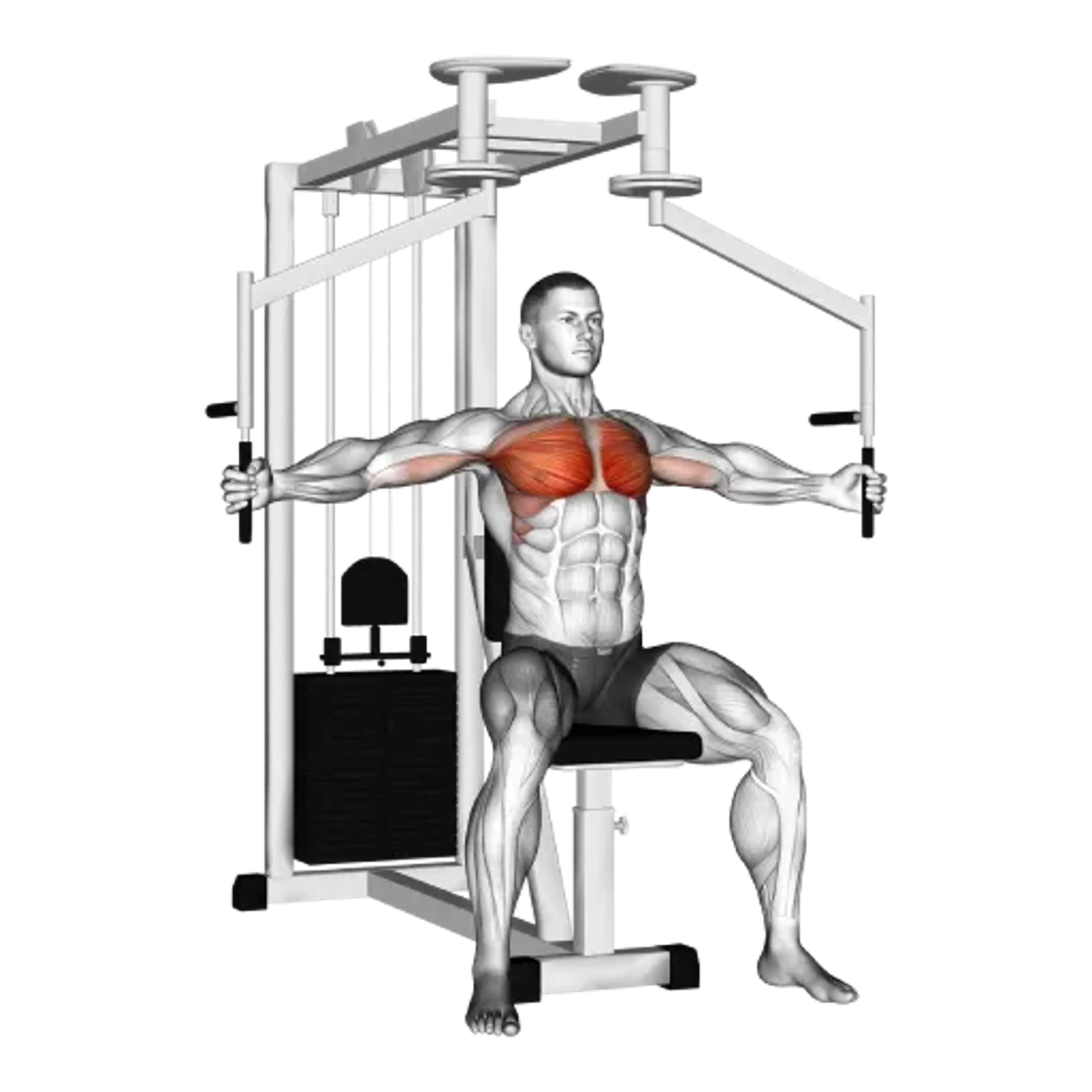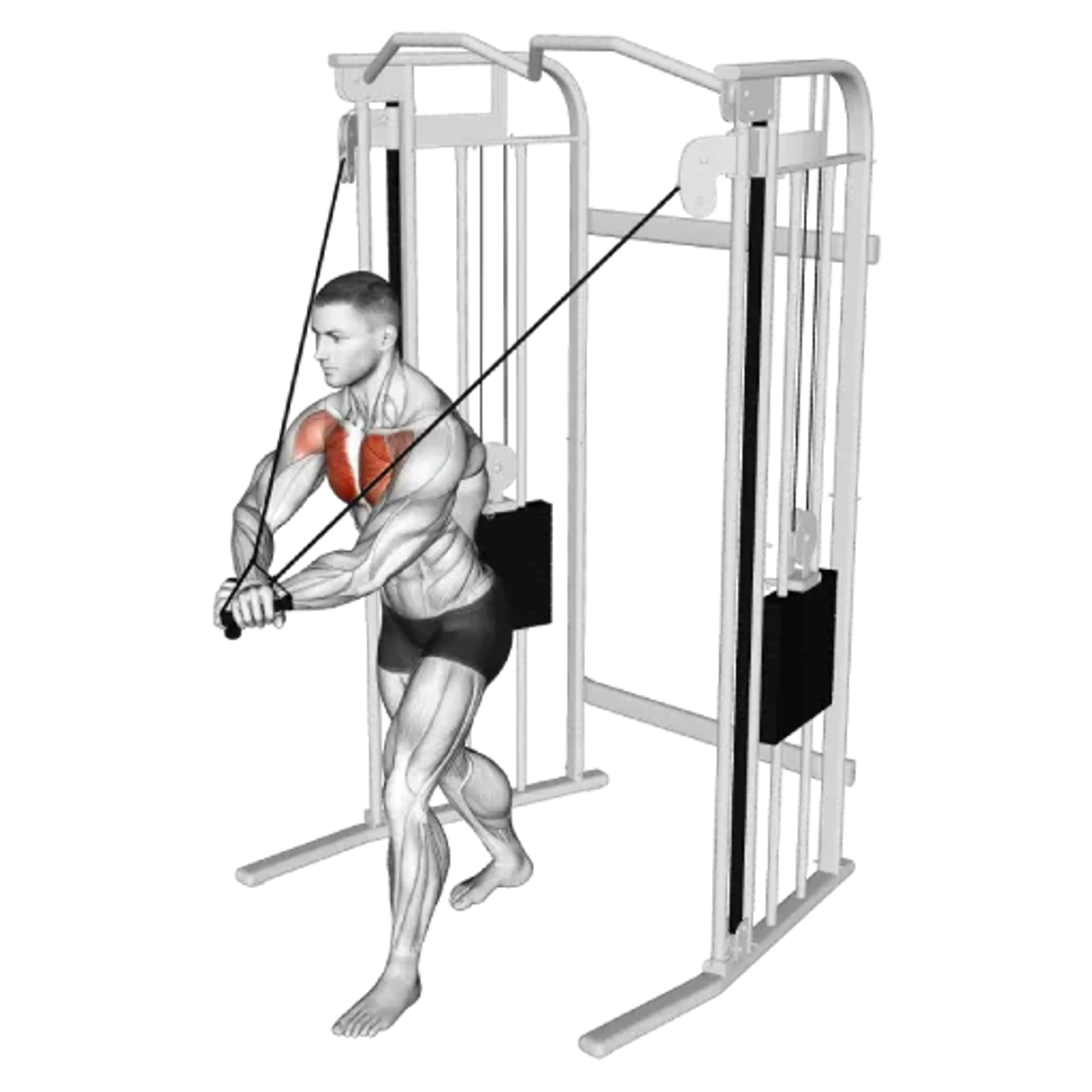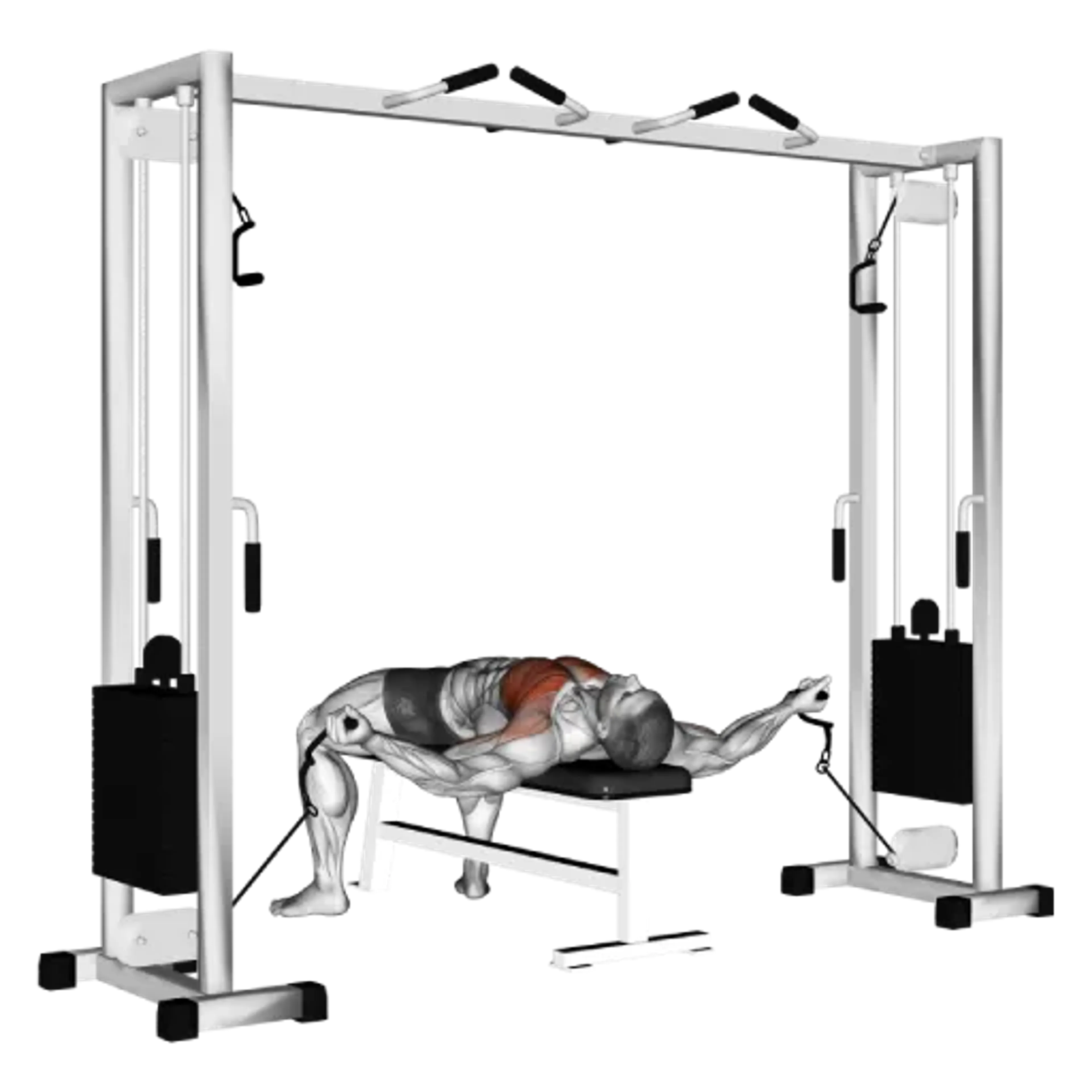Band Low Fly

Overview
- Primary Focus:
- Chest.
- Equipment:
- Resistance bands.
- Difficulty:
- Beginner.
General Information
Band Low Fly is an isolation exercise that primarily targets the chest and also engages the front shoulders and biceps. It is a beginner-level movement that emphasizes the upper chest by pulling from a low anchor up and in across the body.
Bands make setup simple at home or in limited gym spaces and provide smooth tension through the arc. This variation shines as an accessory for hypertrophy, a warm-up to groove the clavicular pec line before incline pressing, or a deloaded option when joints are irritated.
The upward and inward path biases the fibers that help raise the arm in front of the body. Keep ribs down, neck long, and elbows softly fixed to direct tension into the pecs rather than the shoulders. Use a slow return to stretch under control for a strong pump without joint strain.
Choose Band High Fly to bias the lower chest, or a Cable Fly if you want a steadier resistance profile. Single-arm sets can improve balance and keep tension even when space is tight.
Muscles Worked
- Pectoralis Major
- Primary
- Deltoid
- High
- Biceps Brachii
- Low
- Rectus Abdominis
- Low
- Serratus Anterior
- Low
Instructions
- Anchor the bands low behind you (around knee height) so the line of pull is up and in.
- Grip the handles, step forward to create light tension, and take a stable staggered stance with soft knees and braced core.
- Set shoulders down and back. Start with arms slightly behind your hips, elbows softly bent, palms facing forward or slightly in.
- Sweep the hands up and in on a wide arc until they meet around chest to collarbone height. Squeeze the upper chest at the top without shrugging.
- Pause briefly, then return slowly along the same path until you feel a gentle stretch across the chest without shoulder discomfort.
- Keep ribs down and avoid leaning back to gain momentum; let the pecs do the work throughout the arc.
- Select band tension that allows 1-2 reps in reserve with clean form across 2-4 sets.
Common Mistakes
Injuries
Band Low Fly is a low risk exercise when performed with proper technique.
Shoulder or biceps tendon irritation can occur if you overreach, shrug, or let the elbows lock out. Keep elbows softly bent and control the path to keep tension in the chest.
If you feel pinching at the top, lower the finish height slightly, lighten the band, or step closer to reduce tension. Maintain a neutral ribcage to avoid stressing the lower back.
Stop if pain persists or alters your form. Regress by decreasing range, using thinner bands, or performing single-arm sets to refine control before progressing again.
Alternative Exercises

Frequently Asked Questions
- Q: How low should I set the anchor?
Around knee height or slightly below works well. Aim the path up and in toward the upper chest without shrugging the shoulders.
- Q: Where should my hands finish?
Around sternum to collarbone height with wrists neutral and elbows softly bent. Stop where you can squeeze the upper chest without shoulder strain.
- Q: Can I do this one arm at a time?
Yes. Single-arm flyes improve stability and let you fine-tune the path. They are useful if space is limited or if sides feel different.
- Q: When should I use this in my workout?
Use after pressing as an accessory for hypertrophy, or before pressing as an activation warm-up. Keep reps controlled and avoid grinding with very thick bands.
Overview
- Primary Focus:
- Chest.
- Equipment:
- Resistance bands.
- Difficulty:
- Beginner.




